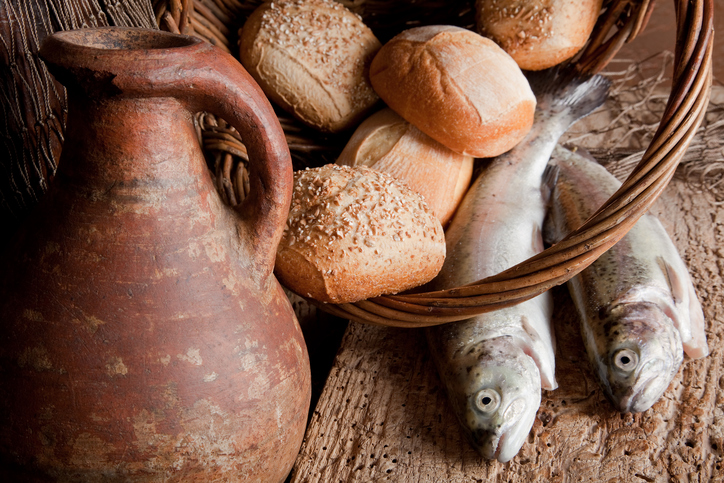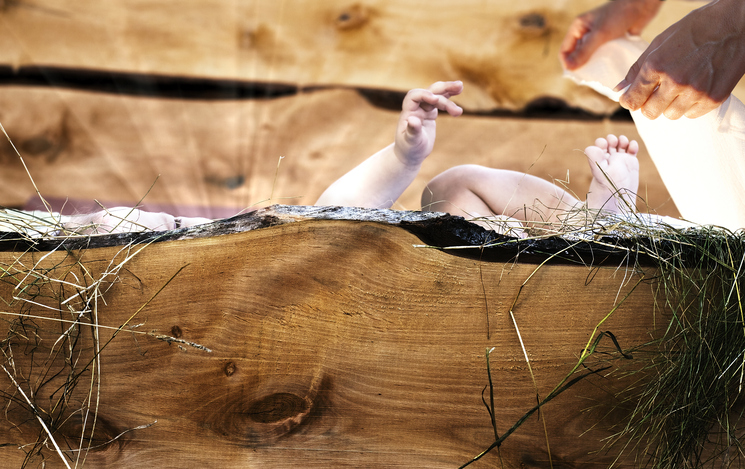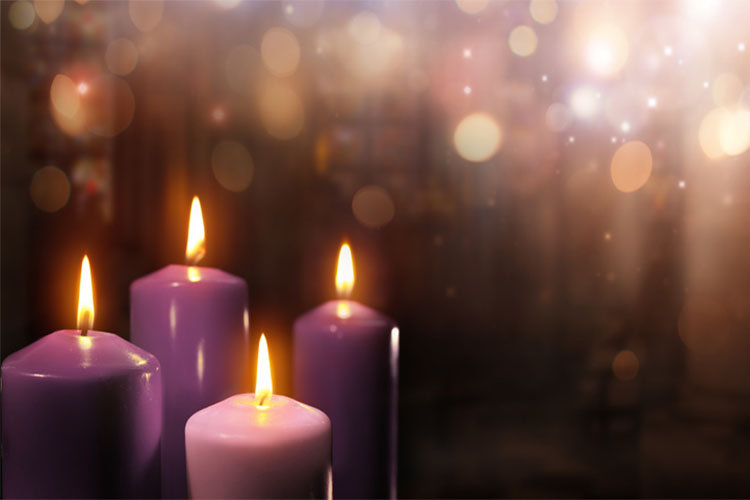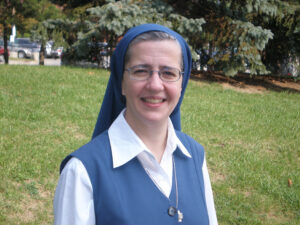Thanksgiving in the convent is pretty amazing. Sometimes the stereotype of religious sisters is that they are solemn, serious, and strict, but in my experience, religious sisters carry within them a deep joy that simply bubbles over when there is an occasion like Thanksgiving to celebrate.
The thing that Jesus does most often in the Gospel accounts is to share a meal with others. Jesus must have grown up really enjoying his daily meals with Mary and Joseph. I am sure Mary was a good cook, but with their simple lifestyle the meals couldn’t have been fancy. I think it was the shared communion around the meal that Jesus, Mary, and Joseph must have cherished. In keeping with the Jewish tradition (as in Psalm 23), Jesus also uses the image of a feast several times to describe the kingdom of God.
Given this background, Matthew’s description of a thrown-together, last-minute, potluck-kind-of-picnic in today’s Gospel reading (Mt. 15:29-37) has multiple layers of meaning for us, especially during Advent when we are in a time of preparation for the eternal banquet with God.
- Out of compassion, Jesus performs a miracle by feeding thousands of people with just a few fish and a few loaves of bread.
- Jesus worked this miracle with what people brought with them—a few loaves of bread and a few fish, and through the disciples, who passed the bread and fish out to the crowds.
- The miraculous multiplication of the loaves and fish is a foreshadowing of the Eucharist, which is the closest we can come to heaven here on earth.
- The abundance of the bread, the satisfaction of all present, are a foreshadowing of the abundance of heaven.
A meal is a place where everyone shares the fulfillment of two common human needs: to be physically nourished and to belong to a family or community by sharing food and drink together. Jesus feeds everyone in that crowd, whether they believe him or not, whether they accept him or not. ALL are fed, ALL are satisfied.
In this account of the miracle of the loaves and fishes, I also see an account of the kind of Advent I want to have:
1) I enter the Advent season needy, hungry, and wounded. Sin has deformed my life—both my own sin and that of others. Perhaps I have misused the power of speech with unkind words; perhaps I am stuck in a bad habit and, spiritually lame, cannot move forward; perhaps I have been betrayed by a loved one, and I struggle to forgive.
Whether we are wounded by others’ sins, our own, or both, none of us come whole to Jesus.
2) I take the risk of going out to a deserted place to meet Jesus, who welcomes me as I am. Jesus is moved with compassion for my neediness. In his great love, he invites me to stay with him. And he offers to heal me in the way that I most need healing at this time.
3) I seek to stay with Jesus—perhaps by praying with the Word of God, perhaps by going to Mass and Communion more often. In staying with him, I give our relationship an opportunity to grow deeper and stronger. And Jesus, never outdone in generosity, strengthens me with exactly what I need (even if I don’t know it), especially in his Word and in the Eucharist.
4) Truly and deeply nourished by my encounter with Jesus, I share that nourishment and joy with those around me. Together, we become a little more prepared for the eternal banquet of heaven.
We are already well into the first week of Advent. If we come to Jesus as we are, if we trust him and tell him what is weighing most on our hearts, if we ask him to heal and nourish us, our loving Shepherd will bless us this Advent in ways more abundant and gracious than we can imagine.
Copyright © 2017 Daughters of St. Paul.

Sister Marie Paul Curley entered the Daughters of Saint Paul when she was a teenager. A published author, Sr. Marie Paul invites others to encounter Christ’s love in the rapidly-developing digital culture. You can find her online at: www.pauline.org/mariepaulcurley


 Andrea Perry is a Project Coordinator for myParish app at Diocesan. Andrea has worked at the Parish Level in Youth Ministry and Adult Faith Enrichment for the past 8 years. She joined the Diocesan team in 2017. As a project Coordinator, Andrea desires to bring the Word of God to others through modern means of social communication, for the glory of God and the salvation of souls.
Andrea Perry is a Project Coordinator for myParish app at Diocesan. Andrea has worked at the Parish Level in Youth Ministry and Adult Faith Enrichment for the past 8 years. She joined the Diocesan team in 2017. As a project Coordinator, Andrea desires to bring the Word of God to others through modern means of social communication, for the glory of God and the salvation of souls.
 As Diocesan Publications’ Solutions Evangelist, Tommy is committed to showing parish and diocesan staffs how to use our communication tools to their best advantage. He has worked for years in various, youth ministry, adult ministry, and diocesan roles. As an expert on Catholic communication, Tommy uses his parish and diocesan experiences to help you make your ministry effective. To bring Tommy to your parish or for general inquiry, contact him at
As Diocesan Publications’ Solutions Evangelist, Tommy is committed to showing parish and diocesan staffs how to use our communication tools to their best advantage. He has worked for years in various, youth ministry, adult ministry, and diocesan roles. As an expert on Catholic communication, Tommy uses his parish and diocesan experiences to help you make your ministry effective. To bring Tommy to your parish or for general inquiry, contact him at 

